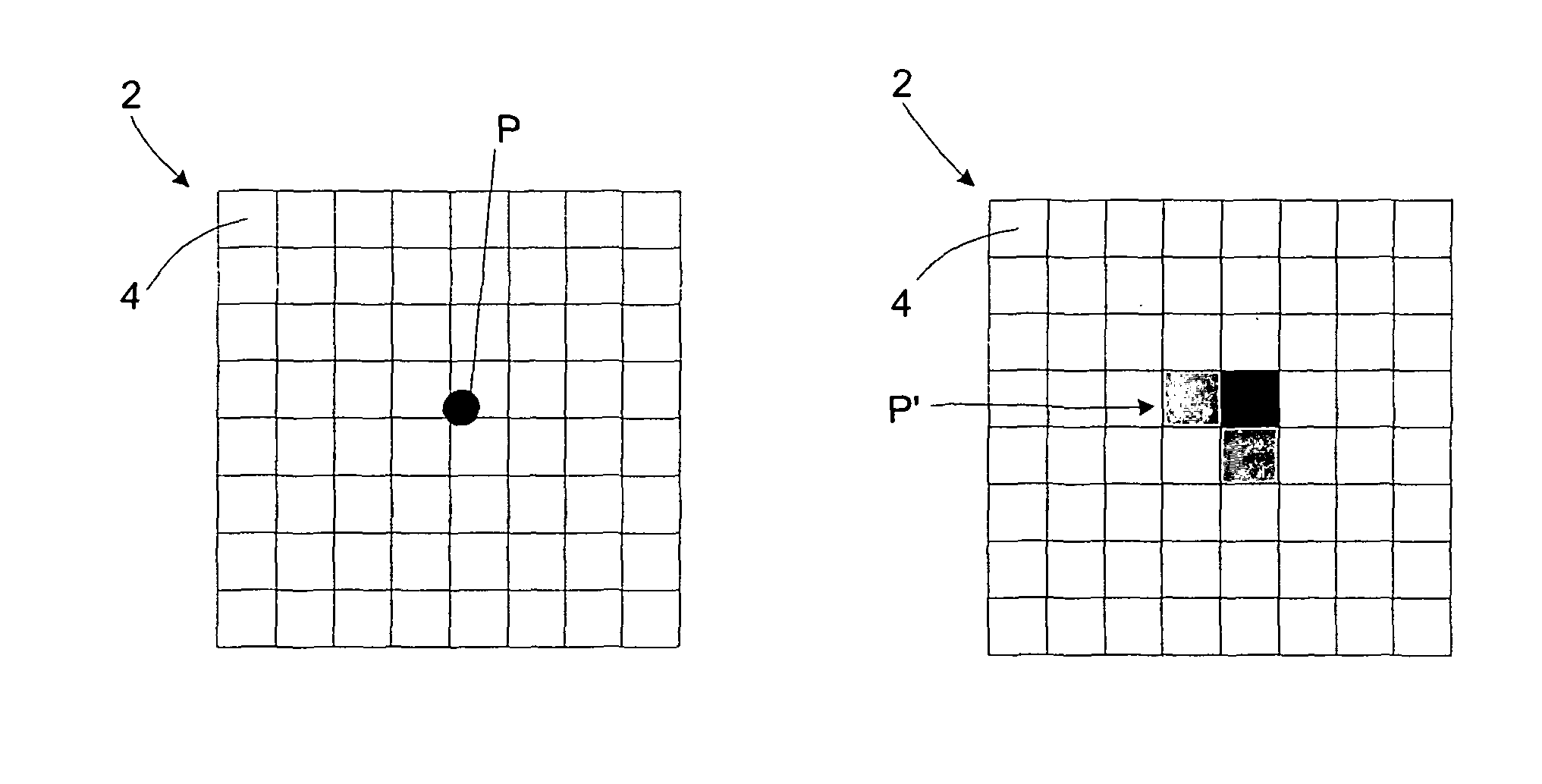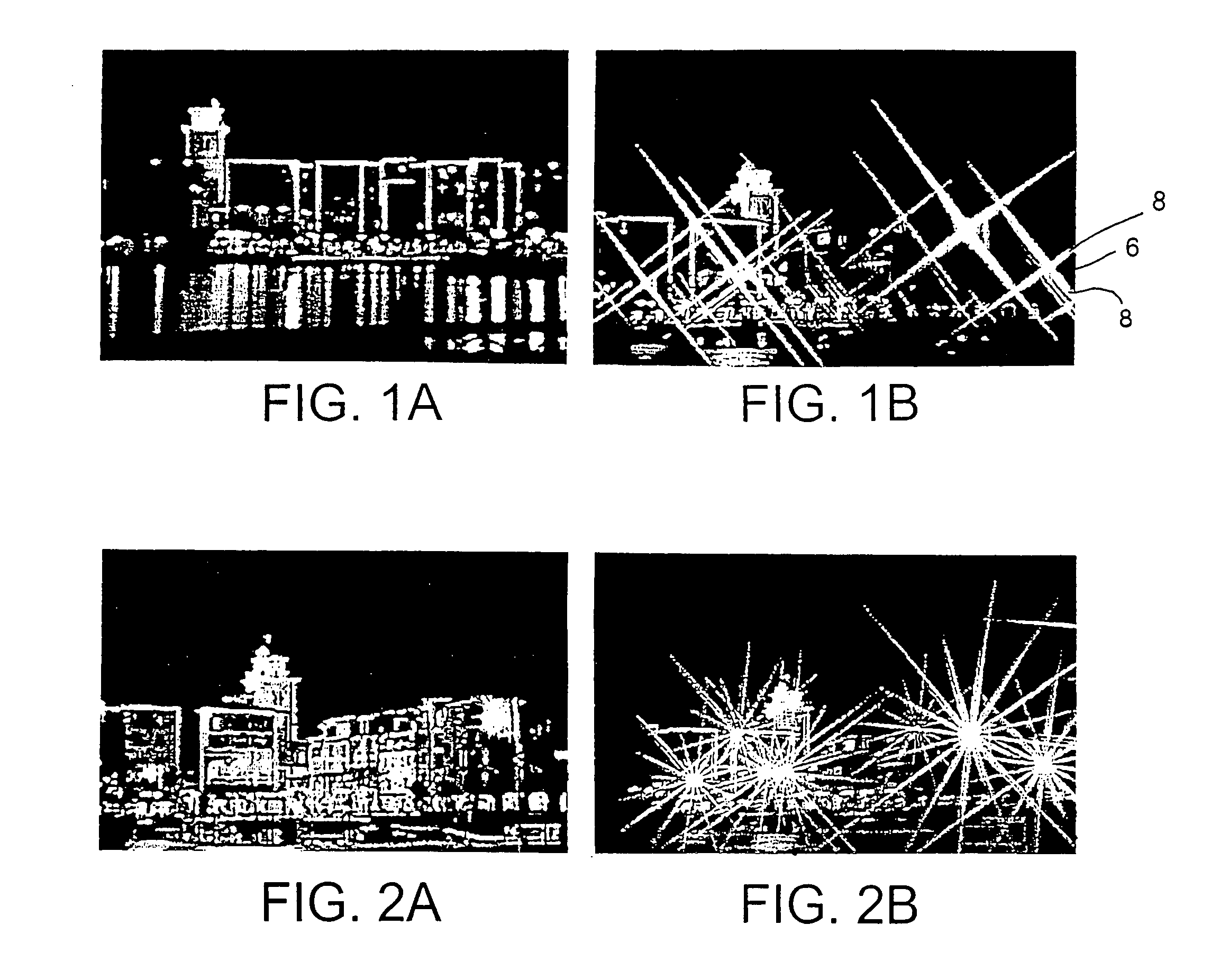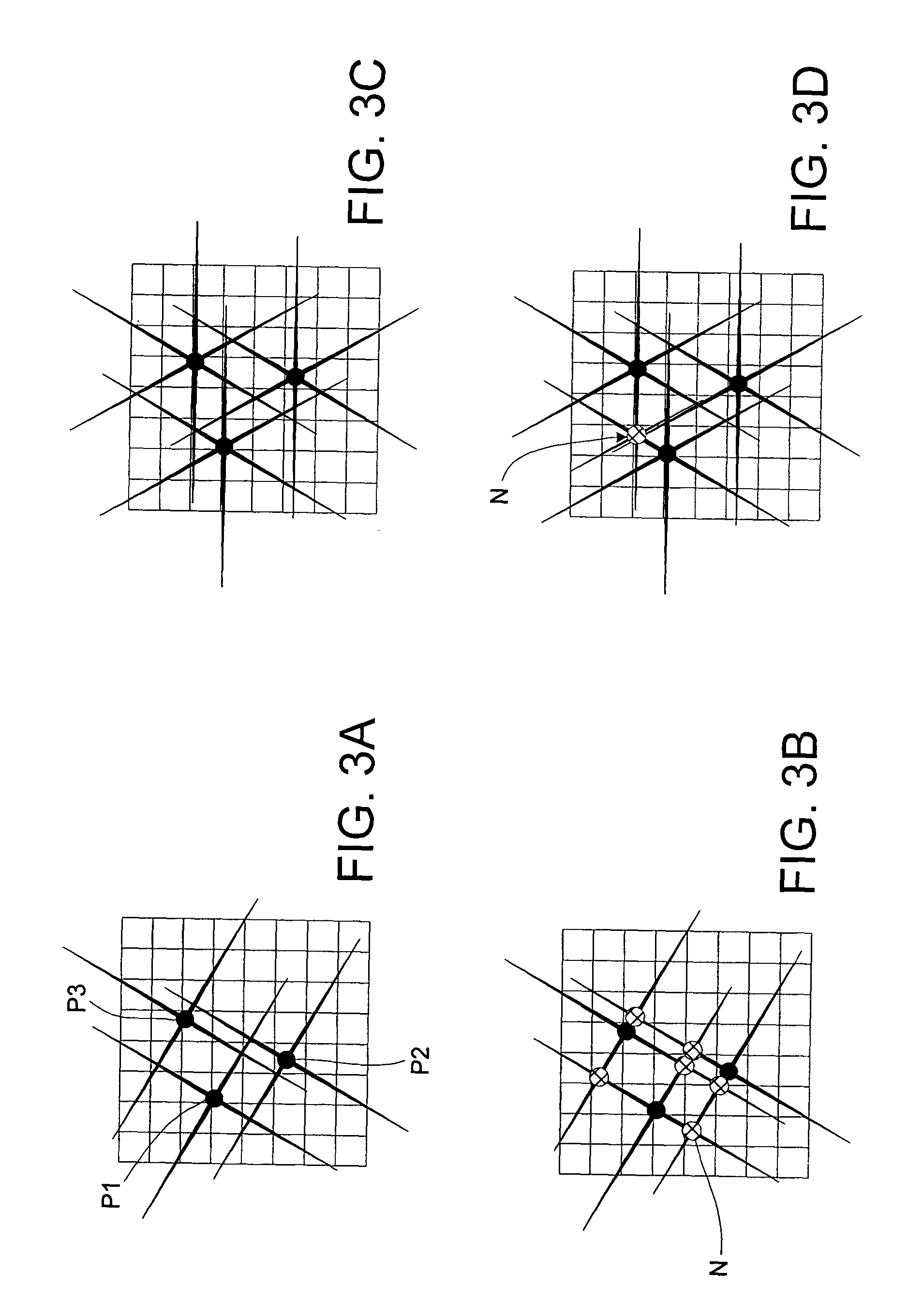Tracking system with scattering effect utilization, in particular with star effect and/or cross effect utilization
a tracking system and scattering effect technology, applied in the field of tracking systems, can solve the problems of significant errors, inability to tolerate one pixel accuracy errors, and substantial dependence on position determining accuracy
- Summary
- Abstract
- Description
- Claims
- Application Information
AI Technical Summary
Benefits of technology
Problems solved by technology
Method used
Image
Examples
Embodiment Construction
[0045]The present invention can be used within the framework of image-guided, navigation-assisted medical treatment. In such treatment, a position of a patient, a medical instrument and / or a treatment apparatus can be detected with the aid of markers and a camera system (tracking system), thereby enabling image-assisted surgery.
[0046]The invention has numerous advantages, including lower overall system costs, extremely small and light markers, simplified marker detection procedures, increased accuracy, and robust / reliable marker detection.
[0047]Light scattering effects such as, for example, star and / or cross effects, are shown in FIGS. 1A, 1B, 2A and 2B. The contrasted images show the effect of a star and / or cross filter in images with a number of bright image points (spotlights). As can be seen, using such an effect on the spotlights results in a cross pattern (FIG. 1B) or a star pattern (FIG. 2B), depending on the effect arrangement. The intersection point 6 of the perpendicular b...
PUM
 Login to View More
Login to View More Abstract
Description
Claims
Application Information
 Login to View More
Login to View More - R&D
- Intellectual Property
- Life Sciences
- Materials
- Tech Scout
- Unparalleled Data Quality
- Higher Quality Content
- 60% Fewer Hallucinations
Browse by: Latest US Patents, China's latest patents, Technical Efficacy Thesaurus, Application Domain, Technology Topic, Popular Technical Reports.
© 2025 PatSnap. All rights reserved.Legal|Privacy policy|Modern Slavery Act Transparency Statement|Sitemap|About US| Contact US: help@patsnap.com



